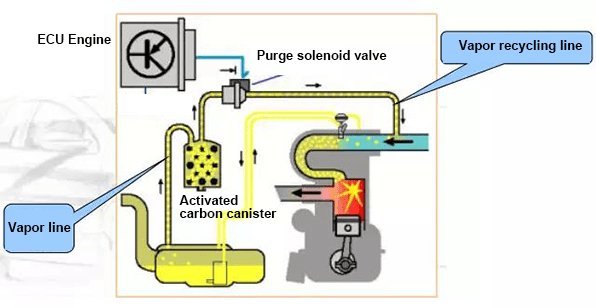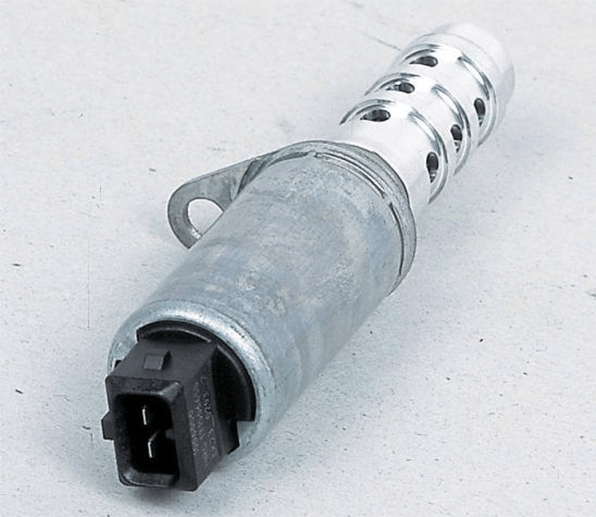
Variable Valve Timing (VVT) systems are crucial components in modern engines, optimizing performance, fuel efficiency, and emissions. A key player in this system is the Variable Valve Timing Solenoid. When this component malfunctions, it can lead to a range of issues.
Here are some symptoms of a failing variable timing solenoid valve, along with details on how to replace a damaged one and the replacement cost. We hope that by reading the following, you can better maintain your car and save costs.
1. What Are the Symptoms of a Bad Variable Valve Timing Solenoid
Recognizing the symptoms early can prevent further damage and costly repairs down the road.

1.1 Engine Performance Issues
One of the most noticeable symptoms of a failing VVT solenoid is a decline in engine performance. You might experience reduced power, sluggish acceleration, or poor fuel economy. These performance issues can be intermittent at first but may become more consistent as the problem worsens.
1.2 Rough Idle
A rough or unstable idle is another common indicator of a bad VVT solenoid. You may notice your engine idling erratically, with fluctuations in RPMs or vibrations that weren't present before. This rough idle can be more pronounced when the engine is cold or when the vehicle is stopped at a traffic light.
1.3 Check Engine Light (CEL)
When the Engine Control Unit (ECU) detects a problem with the VVT solenoid or its related components, it will trigger the Check Engine Light on your dashboard. While the CEL can illuminate for various reasons, it's essential not to ignore it, as it could indicate a serious issue with the engine's timing system.
1.4 Poor Fuel Economy
A faulty VVT solenoid can disrupt the engine's timing, leading to inefficient combustion. This can result in decreased fuel economy, meaning you'll need to refuel more frequently to cover the same distance. Monitoring your gas mileage and noting any sudden drops can help pinpoint potential issues with the VVT system.
1.5 Loud Engine Noise
Unusual sounds emanating from the engine bay can also signal VVT solenoid problems. You might hear rattling, ticking, or knocking noises, especially during acceleration or when the engine is under load. These noises can indicate issues with the timing chain or camshaft phasers, both of which are closely linked to the VVT system.
2. Replacing a Bad VVT Solenoid (Variable Valve Timing Solenoid Replacement)

If you've identified any of the symptoms mentioned above and suspect a faulty VVT solenoid, replacing it promptly can prevent further damage to your engine. While the task may seem daunting, especially for novice DIY enthusiasts, it's entirely feasible with the right tools and guidance.
1. Gather Necessary Tools and Supplies: Before diving into the replacement process, gather the required tools and supplies. You'll typically need a socket set, wrenches, pliers, a torque wrench, and a new VVT solenoid compatible with your vehicle's make and model.
2. Locate the VVT Solenoid: The VVT solenoid is usually located near the cylinder head, attached to the engine block or valve cover. Refer to your vehicle's service manual or consult online resources to pinpoint its exact location. You may need to remove engine covers or other components for better access.
3. Disconnect Battery and Electrical Connections: As a safety precaution, disconnect the negative terminal of the vehicle's battery to prevent accidental electrical shocks. Then, carefully disconnect any electrical connections attached to the VVT solenoid, taking note of their positions for reassembly.
4. Remove Old Solenoid: Using the appropriate tools, loosen and remove any bolts or fasteners securing the VVT solenoid in place. Once loosened, gently pull the solenoid away from the engine, being mindful of any attached hoses or wires. Some residual oil may leak out, so have a rag or drain pan handy.
5. Install New Solenoid: Before installing the new VVT solenoid, inspect it for any defects or damage. Apply a thin coat of clean engine oil to the O-ring or gasket to ensure a proper seal. Then, carefully position the new solenoid in place and secure it with the bolts or fasteners, tightening them to the manufacturer's specifications.
6. Reconnect Electrical Connections: Reattach any electrical connections that were disconnected earlier, ensuring they're securely in place. Double-check all connections to avoid any potential issues later on.
7. Reconnect Battery and Test: Once the new VVT solenoid is installed and all connections are secure, reconnect the vehicle's battery by attaching the negative terminal. Start the engine and let it idle for a few minutes, monitoring for any unusual noises or warning lights. Take the vehicle for a test drive to ensure proper operation.
3. Variable Valve Timing Solenoid Replacement Cost

The cost of replacing a VVT solenoid can vary depending on several factors, including the vehicle's make and model, the location of the solenoid, and whether you choose to perform the replacement yourself or seek professional assistance.
DIY Replacement: If you're comfortable working on your vehicle and have the necessary tools and knowledge, you can save significantly by replacing the VVT solenoid yourself. The cost of the solenoid itself typically ranges from $50 to $150, depending on the brand and quality. Keep in mind that DIY replacement may require more time and effort but can result in substantial savings on labor costs.
Professional Installation: Opting for professional installation at a dealership or automotive repair shop will incur additional labor costs. On average, labor fees can range from $100 to $300 or more, depending on the shop's hourly rates and the complexity of the job. Additionally, you'll need to factor in the cost of the VVT solenoid itself, which may be marked up by the service provider.
Total Replacement Cost: When considering the total cost of replacing a VVT solenoid, it's essential to account for both parts and labor. On average, you can expect to pay anywhere from $150 to $450 or more for a complete replacement, depending on the aforementioned factors. Shopping around for competitive quotes from different service providers can help you find the best value for your budget.
4. Conclusion
Recognizing bad VVT solenoid symptoms early on and taking prompt action can help prevent further damage to your engine and avoid costly repairs down the road. Whether you choose to replace the solenoid yourself or seek professional assistance, understanding the replacement process and associated costs is key to maintaining your vehicle's performance and reliability.


